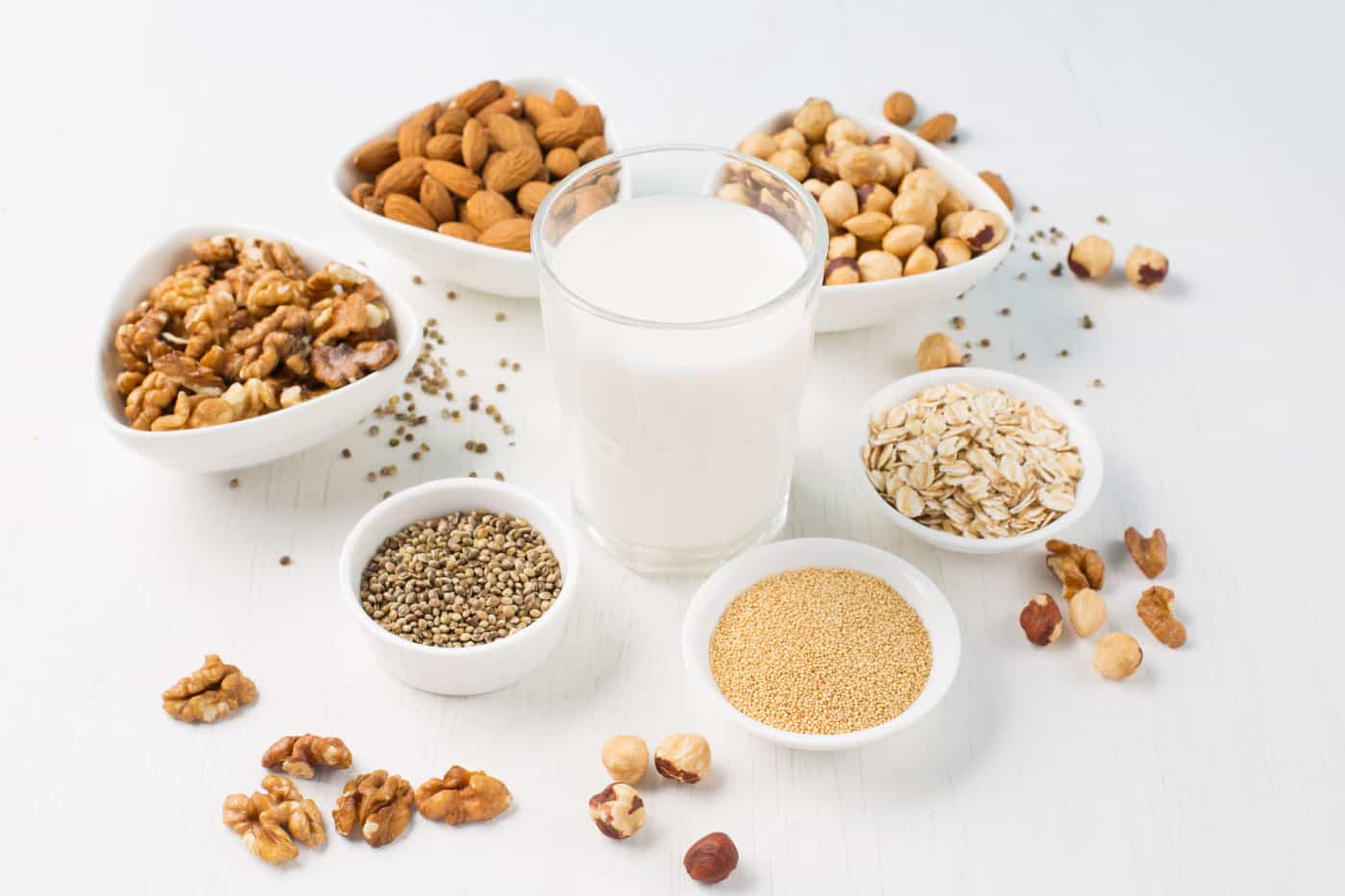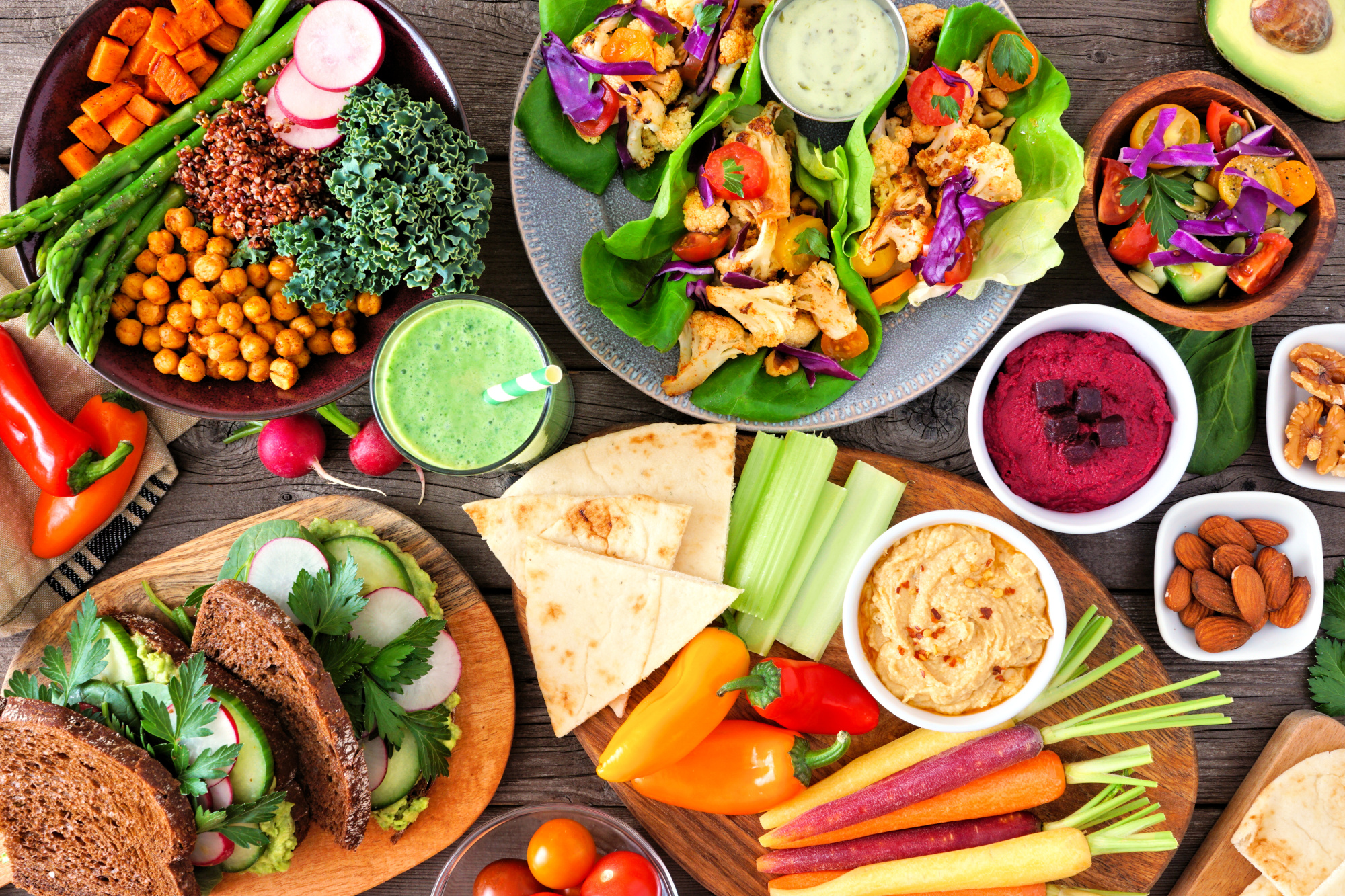In recent years, the healthy reputation of dairy products has come under scrutiny. Here are some reasons why you should rethink your consumption of cow’s milk, and consider the benefits of consuming plant-based milk!
Commercially available milk is not a natural product
Although mother cows naturally produce milk as food for their calves, commercially available milk is classified as a processed food, due to it being pasteurised.1 Milk is pasteurised in order to eliminate harmful bacteria but this also results in the destruction or reduction of the vitamins contained in unprocessed animal milk. This is particularly the case with high-temperature processing, which is used for the production of long-life or UHT milk. Bacteria, dirt particles, and animal hair are also filtered out of cow’s milk before it is packaged and distributed. Despite this processing, residues of pesticides and heavy metals can still be found in cow’s milk.2 3
Cow’s milk contains unhealthy substances
Cow’s milk contains calcium as well as protein and vitamins B2 and B12, but dairy products also contain unhealthy substances such as saturated fats, trans-fatty acids, cholesterol, and sodium.5 A high consumption of these substances is associated with an increased risk of cancer, obesity, and cardiovascular disease.6
Dairy is losing its status as a recommended food
Many national dietary guidelines recommend consuming cow’s milk. In countries where the consumption of animal food is already too high compared to recommendations, cow’s milk is often classified as a single food group which the guidelines recommend should be consumed daily. But there is no evidence to support this recommendation. As a result, in 2019, Canada dropped the ‘milk’ food group from its updated guidelines and instead lists cow’s milk in the protein group, which also includes fortified soya drinks, pulses, nuts and seeds, and other animal-based products such as meat and fish. The daily consumption of cow’s milk is no longer recommended – instead a higher consumption of plant protein is recommended.7
The Plant Milk Report
Based on current studies, this detailed report explores the role that plant milks can play in terms of global healthy and sustainable nutrition, from producers through to distributors and consumers.
Antibiotics, pus cells, and zoonoses
The mass farming of dairy cows can lead to the rapid spread of diseases on farms, which is one of the reasons why antibiotics are often added to feed.8 Heavy use of antibiotics promotes antibiotic resistance, which the World Health Organisation has classified as a serious threat to global public health.9 In intensive farming, often due to insufficiently hygienic conditions, many dairy cows suffer from an inflammation of the udder, known as mastitis, which can be caused by a wide variety of bacteria. Due to the inflammation, pus is often present in cow’s milk. Besides the potential toxins present in the milk, the bacteria that cause mastitis have zoonotic potential (which means that they could be transmitted to humans) and thus represent a further risk to human health.10 11 12
Lactose intolerance is widespread
Worldwide, three quarters of adult people are lactose-intolerant, which means that they are unable to break down the lactose in animal milk.13 Symptoms of lactose intolerance may include bloating, diarrhoea, gas, nausea, and abdominal pain after a meal containing lactose.14
Skin irritations and digestive problems
Dairy products often receive praise for their relatively high protein content. But the proteins contained in cow’s milk can lead to a range of allergic reactions, including skin irritations, respiratory and digestive problems, and even anaphylactic shock.15 In fact, cow’s milk allergy (CMA) is the most common form of food allergy in infants and children, and is the result of an immunological reaction to certain proteins in cow’s milk, particularly β-lactoglobulin and casein, which can cause immediate hypersensitivity reactions.16
Plant-based foods can provide all the calcium you need!
Calcium is an important building block for bones and teeth, as well as other structures and tissues, and is prevalent in both animal- and plant-based foods. As such, a plant-based diet can provide the body with plenty of calcium. Chinese cabbage, kale, broccoli, collards, mustard greens, calcium-set tofu, navy beans, white beans, almonds, tahini, dried figs, mineral water, and fortified products such as plant-based milk are all significant sources of calcium.
The health benefits of plant-based milk
Beyond the health concerns associated with cow’s milk, plant milk can enrich one’s diet and add variety. Many people in industrialised countries follow an unbalanced diet and consume more animal-based products than recommended by national and international health and nutrition organisations. The use of plant milk for drinking, cooking, and baking can help to counteract this.
From a nutritional perspective, soya milk enriched with calcium is the best alternative to dairy milk, partly due to its high protein content, with about 3 g per 100 ml. Milks made from cereals, such as oat, spelt, and rice milk, are also good alternatives due to their natural sweetness and high fibre content. Unsweetened almond milk is particularly low in calories, while hemp milk is rich in healthy unsaturated fats. Many plant milk varieties are also enriched with calcium, vitamin B12, and vitamin D, making them a suitable alternative to dairy milk in this respect, too.17 With so many delicious varieties on offer, there’s no better time to make the switch to plant milk. It’s better for the planet, animals, and you!
Pro Health
These are general nutrition guidelines. If you have concerns about your diet, please talk to your doctor about seeing a dietitian. Discussing the use of supplements with a health professional will help to ensure that they are suitable for you. Never stop taking prescribed medications without first talking to your doctor.
References
- National Health Service (NHS) (2020): Eating processed foods. Available at: https://www.nhs.uk/live-well/eat-well/what-are-processed-foods/#what-counts-as-processed-food [18.12.2020]
- Akhtar, S. (2017): Pesticides Residue in Milk and Milk Products: Mini Review. Pakistan Journal of Analytical & Environmental Chemistry 18, Nr. 1: 37–45: https://doi.org/10.21743/pjaec/2017.06.03
- Welsh J.A. et al (2019): Production-related contaminants (pesticides, antibiotics and hormones) in organic and conventionally produced milk samples sold in the USA. Public Health Nutr. 2019 Nov;22(16):2972-2980. doi: 10.1017/S136898001900106X.
- FAO (2013): Milk and dairy products in human nutrition: http://www.fao.org/docrep/018/i3396e/i3396e.pdf 4WHO (2020): Healthy diet. Available at: https://www.who.int/news-room/fact-sheets/detail/healthy-diet [18.12.2020]
- EFSA (2010): Scientific opinion on dietary reference values for fats, including saturated fatty acids, polyunsaturated fatty acids, monounsaturated fatty acids, trans fatty acids, and cholesterol. EFSA Journal 8 1461: https://efsa.onlinelibrary.wiley.com/doi/epdf/10.2903/j.efsa.2010.1461
- Government of Canada (2019): Eat protein foods. available at https://food-guide.canada.ca/en/healthy-eatingrecommendations/make-it-a-habit-to-eat-vegetables-fruit-whole-grains-and-protein-foods/eat-protein-foods/ [21.12.2020]
- FAO (2013): Milk and dairy products in human nutrition: http://www.fao.org/docrep/018/i3396e/i3396e.pdf
- WHO (2018): Antimicrobial resistance: https://www.who.int/news-room/fact-sheets/detail/antimicrobial-resistance
- Cervinkova, D., H. Vlkova, I. Borodacova et al. (2013): Prevalence of mastitis pathogens in milk from clinically healthy cows. Veterinarni Medicina, 58 (11), 567–575
- Gomes, F., M. J. Saavedra & M. Henriques (2016): Bovine mastitis disease/pathogenicity: evidence of the potential role of microbial biofilms. Pathogens and Disease 74(3), ftw006. doi:10.1093/femspd/ftw006
- Abebe, R., H. Hatiya, M. Abera, et al. (2016): Bovine mastitis: prevalence, risk factors and isolation of Staphylococcus aureus in dairy herds at Hawassa milk shed, South Ethiopia. BMC Veterinary Research 12(1), doi:10.1186/s12917-016-0905-3
- Silanikove, N., Leitner, G., Merin, U. (2015): The Interrelationships between Lactose Intolerance and the Modern Dairy Industry: Global Perspectives in Evolutional and Historical Backgrounds. Nutrients 7, Nr. 9: 7312–31: https://doi.org/10.3390/nu7095340
- The National Institute of Diabetes and Digestive and Kidney Diseases(202017): Lactose Intolerance. Available at https://www.niddk.nih.gov/health-information/digestive-diseases/lactose-intolerance [21.12.202008.03.2018]
- FAO (2013): Milk and dairy products in human nutrition: http://www.fao.org/docrep/018/i3396e/i3396e.pdf
- Knopfler, M. (2016): How Compatible is Cow’s Milk with the Human Immune System? The Science Journal of the Lander College of Arts and Sciences. Vol. 9. No. 2. p. 182–190
- ProVeg e.V. (2019): Plant Milk Report 2019. Berlin





